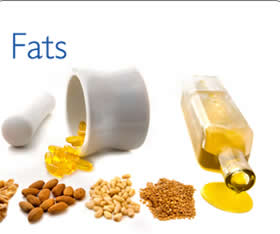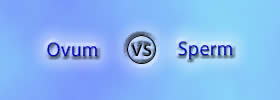Difference between Protein and Fat
Key Difference: Proteins are the primary building blocks for one’s body’s tissues. 20 amino acids are essential for the human body. Fats are the fatty acid esters of glycerol and are the primary energy depots of animals.
 Proteins and fats play a very vital role for the human body. It is the essential element and nutrient for the body that signifies the well-being of the health and also helps in fighting off diseases. They are known as the micro-nutrient. There is a major relation between proteins and fats. How? Let’s understand both the terms.
Proteins and fats play a very vital role for the human body. It is the essential element and nutrient for the body that signifies the well-being of the health and also helps in fighting off diseases. They are known as the micro-nutrient. There is a major relation between proteins and fats. How? Let’s understand both the terms.
Proteins are the primary building blocks for one’s body’s tissues. They are polymers of amino acid. There are hundreds and thousands of different proteins that are all made up of different combinations of amino acids. There are only twenty different amino acids that are important for humans. These are combined together in various combinations to form proteins for the body. Human can only produce 11 of the 20 amino acids, while other nine amino acids are to be produced by basic food, also known as the essential amino acids. Proteins come primarily from meats, legumes, nuts, seeds, and fish, and there are other vegetables that have some proteins too. The different amounts of fat and carbohydrates are contained by each source of protein.
Proteins serve two broad purposes in the human body: Structural proteins and functional proteins. Structural proteins form most of the solid material in the human body. Whereas, functional proteins help carry out activities and functions in the human body.
 Fats are a sub-group of lipids and are known as triglycerides. Fats are the fatty acid esters of glycerol and are the primary energy depots of animals. The energy depots are used for storing energy that may be required by the body during deprivation of food. Fats are generally soluble in organic solvents and insoluble in water. In a medical or biochemical context, the term ‘lipid’ is used to refer to fat in both liquid and solid states.
Fats are a sub-group of lipids and are known as triglycerides. Fats are the fatty acid esters of glycerol and are the primary energy depots of animals. The energy depots are used for storing energy that may be required by the body during deprivation of food. Fats are generally soluble in organic solvents and insoluble in water. In a medical or biochemical context, the term ‘lipid’ is used to refer to fat in both liquid and solid states.
Fats play an important part in chemical and metabolic functions. Fats are broken down in a human body by enzymes called lipases, which are produced in the pancreas. Human bodies also have an adipose tissue, which is known as a fat depot and is a loose connective tissue composed of adipocytes. This tissue is compose of roughly 80% fat and is located beneath the skin, around internal organs, in bone marrow and in breast tissue. The main role of this tissue is to store energy in the form of lipids. An excess of this tissue causes obesity in humans.
Fats can be categorized into saturated fats and unsaturated fats. Unsaturated fat can be further divided into cis fats and trans fats. Edible fats include lard, fish oil, butter/ghee, whale blubber, peanut, soya bean, sunflower, sesame, coconut and olive oils, cocoa butter, and margarine. These fats are healthy in a certain limit, but excess of these can cause a person to gain too much fat and become obese.
Comparison between Protein and Fat:
|
|
Protein |
Fat |
|
Description |
The plant or animal tissue which are rich in such molecules are considered as a food source, supplying essential amino acids to the body. |
Fats are a sub-group of lipids and are known as triglycerides. Fats are the fatty acid esters of glycerol and are the primary energy depots of animals. |
|
Types |
Structural Enzymes Receptors Collagen Keratin Other functional proteins |
Trans fat Unsaturated fat - Monounsaturated fat - Polyunsaturated fat Saturated fat Total fat |
|
Functions |
Give shape and structure to cell or organelles Catalyse biological reactions Bind to other molecules and transmit signal Have specific functions |
Energy reserve Protect vital organs and thermal insulation Transport medium for fat-soluble vitamins Hunger suppressor |
|
Examples |
Actin Tubulin Trypsin Adenylate cyclase Steroid R. Antibodies Nuclear factors Neuropeptides |
Animal fats – Butter Cream Lard Meats
Vegetable fats – Olive oil Peanut oil Seed oil Corn oil |
Image Courtesy: nytimes.com, trainingaspects.com









Add new comment